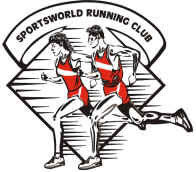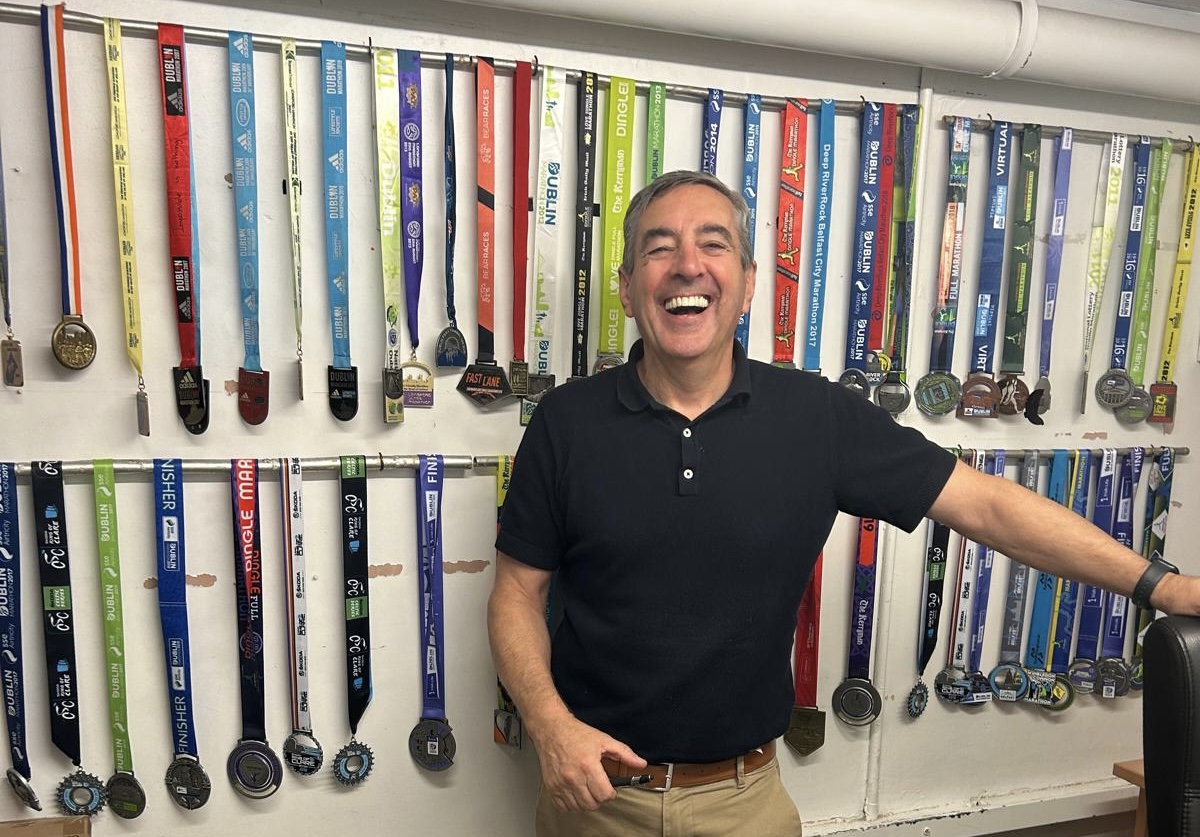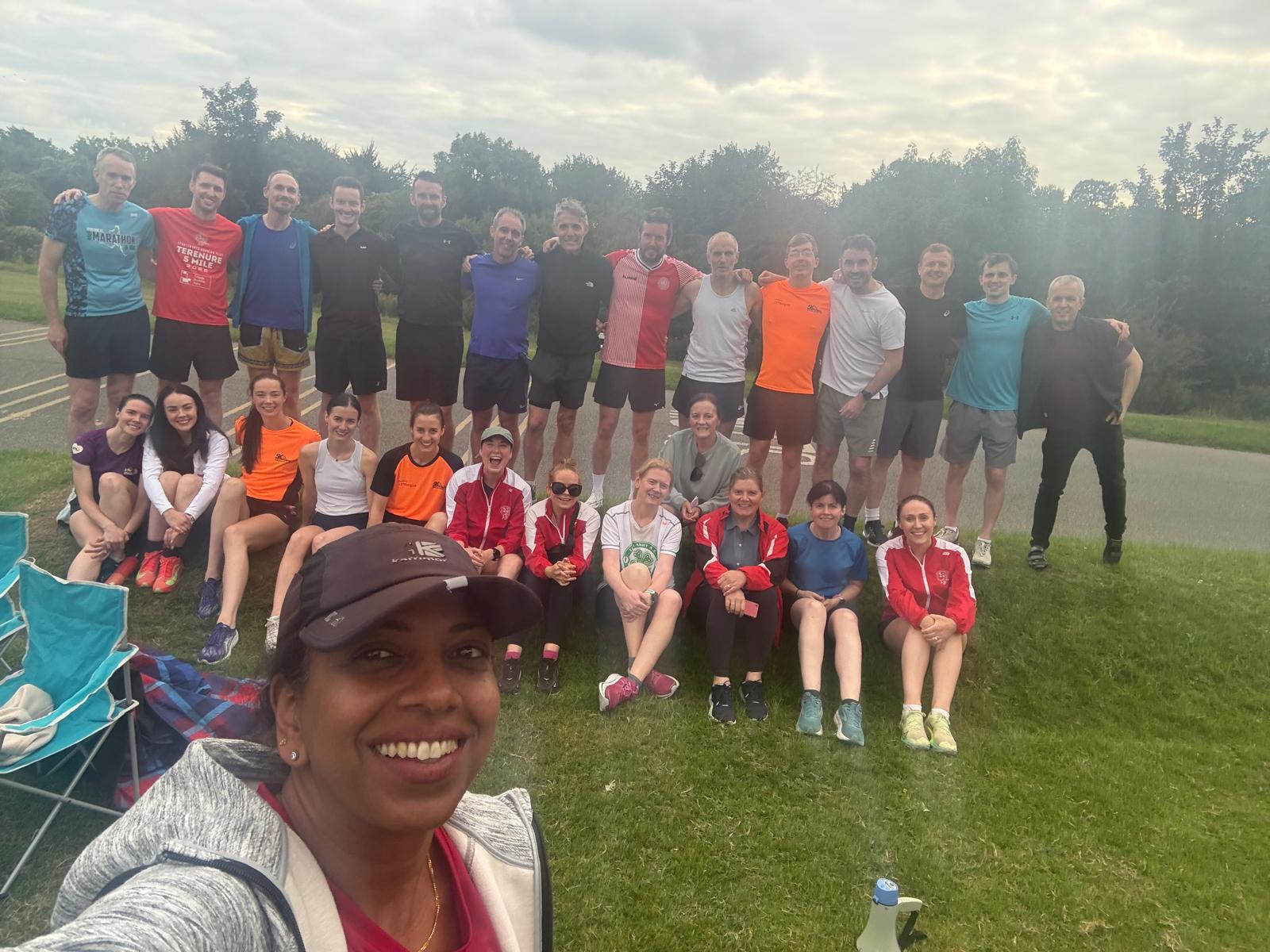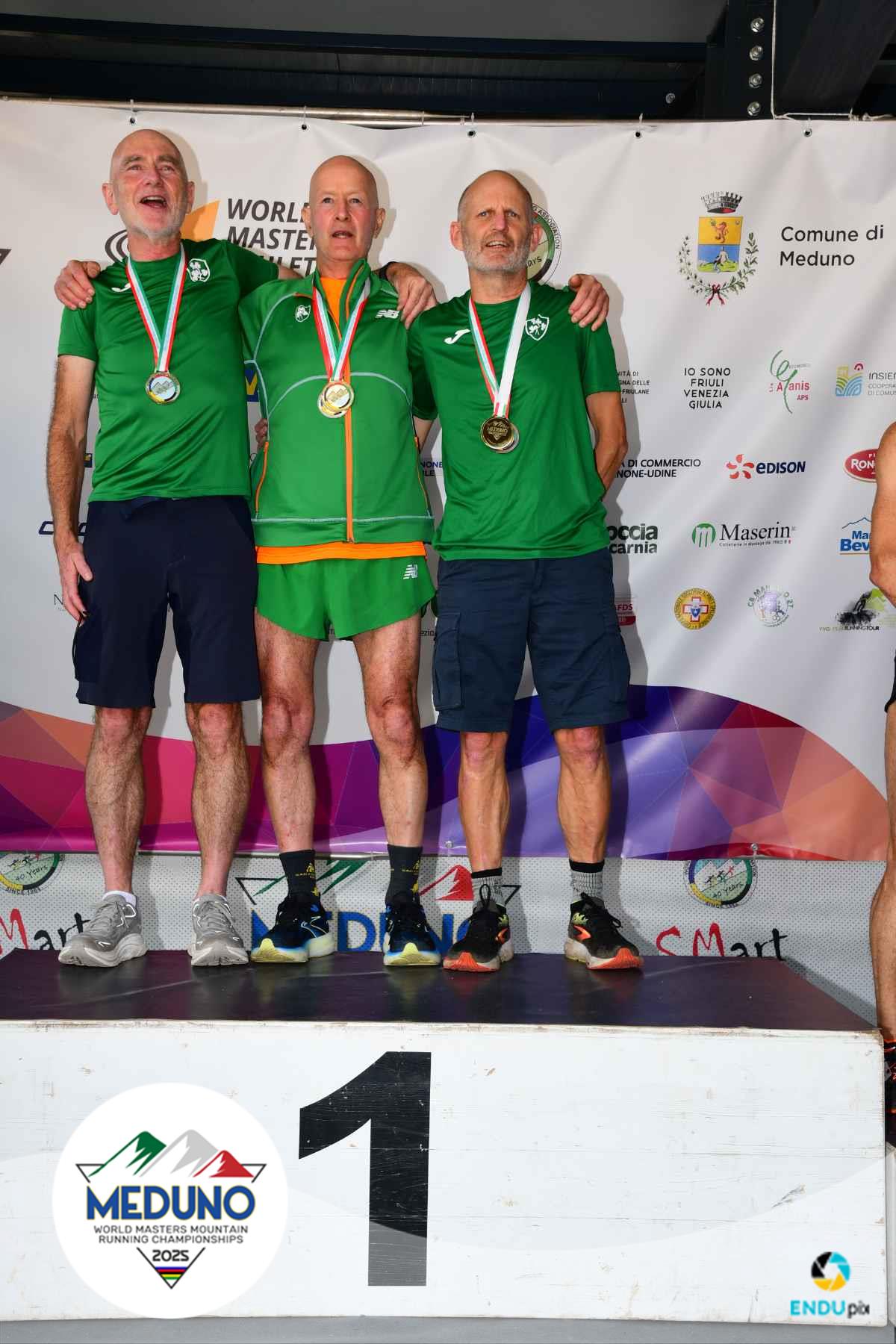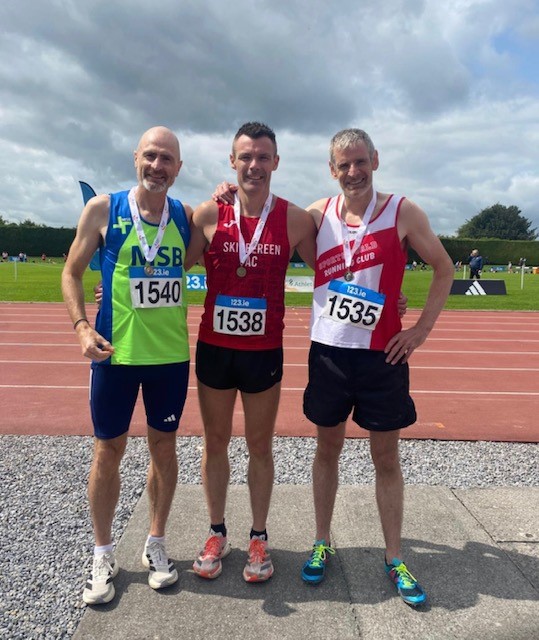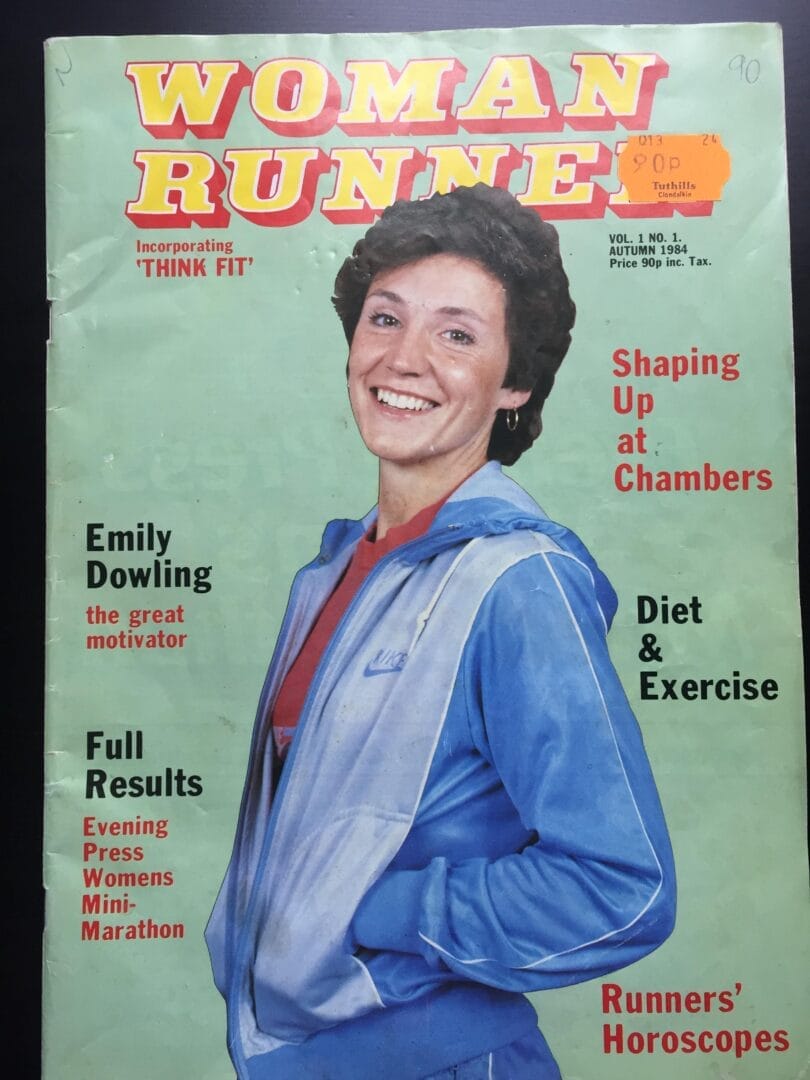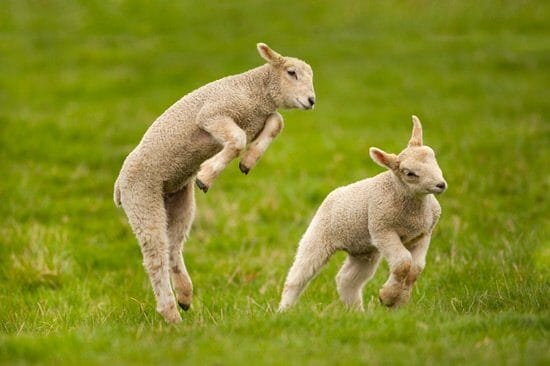These last few weeks have seen somewhat of a return to racing albeit in a very different manner than what we are all used to. Mass participation events are still a long way from once again becoming the norm simply because they are impossible to operate within the existing guidelines and social distancing becomes more & more difficult to implement the greater the numbers. Nowadays the races that are going ahead are being organised with much reduced capacity and far more regulation so it’s a credit to the clubs & the organisations that have managed to successfully host a racing event. This weekend just gone saw North Cork AC host the Charleville half marathon.
This was a race that I entered a number of months ago however like many others it fell foul of the Government guidelines regarding numbers and the mass participation event was cancelled however they had the green light from Athletics Ireland to proceed with an elite only field with numbers being capped at 100 entrants. Once I heard this I chanced my arm and emailed the organising committee to see if there was any chance that I could have a spot. They were very quick to respond and told me that all 100 invitations had issued however they were expecting drop outs after the National Athletics Championships had completed so they took all my details and put me on a waiting list. Then low and behold they emailed me about two weeks ago and confirmed that there was a place for me.
Charleville itself is situated in North Cork very close to the border with Limerick. In fact the race itself is predominantly in Limerick with only the start & finish in Cork. Historically this is a very fast race with many athletes using it as a final training race prior to competing in a marathon. A brief look at the website shows that over the last number of years the vast majority of the fastest half marathon times ran in Ireland were on this course.
The week of the race was quite interrupted for me as I picked up an untimely knee injury which put my participation in doubt. Under normal circumstances I wouldn’t, and in hindsight I shouldn’t, have raced but these are not normal circumstances and not knowing when the opportunity to compete in a good quality road race might present itself again I was determined to do everything that I could in order to make the start line. Plus I had just invested in a brand spanking new pair of short shorts that I was only dying to wear in public (spoiler alert: they’re short). A couple of bouts of intense physio during the week and a lot of foam rolling and strength work meant that come Saturday afternoon I felt like I could race the next day and not disgrace myself.
Not fancying the drive to Charleville on the morning of the race I decided to book myself into the Charleville Park Hotel for the night before the race. The vast majority of the people staying in the hotel were there for the race and there were lots of friendly faces and people who I recognized from other clubs who all had the same idea. That being said there was a couple staying in the room next door to me that were definitely not partaking in the race as they had their own marathon that night!
The morning of the race was very laid back, possibly due to the small field, with registration a very quick process. To comply with Covid guidelines every runner had to complete an online questionnaire before arriving and then when collecting your number you had your temperature taken and you completed another health questionnaire. As part of my warm up I jogged from the hotel down to the registration, completed the protocols, jogged up to the start line and then did a few strides. It was all very straightforward and after the warm up I felt relatively happy that my knee might hold up.
The race numbers were issued on a handicap basis so in other words your number was your predicted finishing position. This also came into play at the start line as they had 100 X’s painted on the road in lines of 5 so numbers 1-5 lined up on the first line, 6-10 on the next line and so forth. My race number was 50 which meant that they thought I was right in the middle of the field. You can imagine my amusement when Barry Minnock, who has a 2.17 marathon, was standing next to me sporting number 51.
Considering that I wasn’t fully fit I decided that I wasn’t going to chase a time or a PB and to just run off feel. A half marathon is a good distance for this approach as you can afford to be cagey at the beginning and you can find your way into the race. The opening km is all downhill & with the wind so I had to hold back to not get caught up in the wave of runners who were flying by me. Given the caliber of entry it’s not like other races so I just let myself settle and focused on myself. After about 1500m the road flattens and it remains relatively flat, bar the odd little incline here and there which are mostly man made bridges, until the last 1500m where you go back up the hill you ran down at the beginning. The course itself is a lollipop shape where you run out the long, straight, flat road to the historical walled town of Kilmallock. The town then marks the 10km point and you go under the walled arch and then turn down a country bóirín going in the opposite direction until the 16km mark where you rejoin the main road and return back the way the race started.
On its day this course could be wicked fast but Sunday did not lend itself to those conditions. My knee held up reasonably well for the first 15/16km but the last stretch home was a struggle and I was in a lot of discomfort. Another issue was the lack of water stations. This was through no fault of the organisers as they really were restricted with numbers and this impacted the number of volunteers that were allowed on the course. As a compromise there was one water station which you passed twice at 6km & 16km. A lot of people really struggled in the section from Kilmallock back. Another water station in the town could have made a massive difference.
After the opening 2km the field had really spread out and due to the small numbers I assumed that the race was now going to be more like a time trial and I wouldn’t see any of the runners in front again. However after Kilmallock, to my surprise, the field started coming back to me quite rapidly and I was overtaking plenty of runners. Very surprisingly there was also a lot of people dropping out. I counted at least 8 (in the end 74 finished out of 93 starters – over 20% drop out rate). As mentioned above by the 16km mark I was struggling and my pace had dropped significantly but my splits were still consistent. In other words I went from averaging say 3.35 p/km to averaging 3.45 p/km. My splits weren’t getting progressively slower as the race went on. This probably explained why the field was coming back to me as it seemed that those in front were having a more gradual slowing in pace.
With about 4km to go I could see a group of 5 about 300m in front of me. I was trying to gauge the distance based on time so when they went around a bend I checked my watch and timed how long it took me to reach that bend (about 1 minute 15s). The gap was closing on them the whole time and I knew that I would catch them even despite my own woes. Sure enough with about 1500m to go I was tucked in behind the group and when we passed the 20km mark I was leading the group. The last km here is by far the toughest of the race as you go back up that hill you flew down at the beginning. I finished the race in 77.15 which was well off both my PB and what I would have hoped to run if you had asked me a week ago. My finishing position was 48th so I did beat my handicap by two places!!
After the race it seemed that nobody was happy with their performance. Every single person who I spoke with struggled with the conditions and the times were way off what you might expect. For reference the race was won by Mick Clohissy in 65.08 which was a full minute slower than the time he ran last year when finishing 2nd. Hugh Armstrong was 3rd this year after finishing the same position in 2019 but this year he was 2 minutes slower. Sergiu Ciobanu was over 4 minutes off his previous best on this course. There was a lot of confusion after the race amongst the club runners that I know and nobody could explain why everyone underperformed. My own guess is that we were all undercooked due to the lack of races. A half marathon is a tough race to jump into and expect a good time if you haven’t raced in 6 or 7 months. It’s no coincidence that the few runners who did race well had all competed in the Nationals in Santry over the last few weekends.
Overall though it was great to be back racing even if the experience was different to what one might be used to and the performance was underwhelming. Huge credit has to be given to Michael Herlihy of North Cork AC who managed to organise a great race with a stellar field whilst also competing himself (take note Michael Cunningham).
This is a great course and I would definitely recommend it as a race especially if you were training for one of the flatter marathons such as Berlin or Frankfurt. If you are planning on running the Dublin marathon you are probably better off doing the Dublin half marathon or the Rock N’Roll half as, whilst definitely slower, these two would mimic the Dublin race profile more closely. Overall though I enjoyed my trip to Cork although I probably didn’t enjoy it as much as the couple in room 210 enjoyed theirs!
